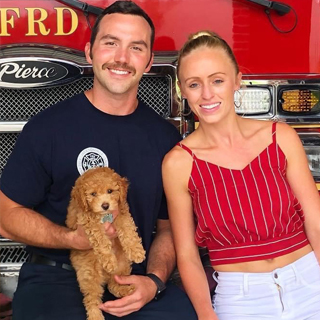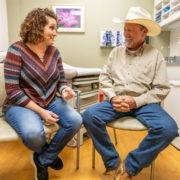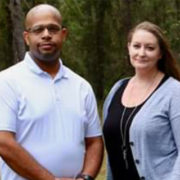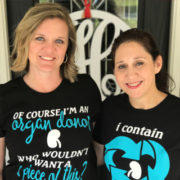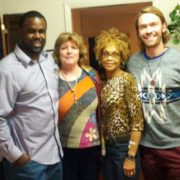Allie and Tony: A Vast Connection to Transplantation
Alexandra (Allie) Biess was born on her due date, September 17, 1993. She was a full-term, 8-pound, 11-ounce baby.
Allie was Maribeth and Larry Biess’ first child. She was a little jaundiced at birth, which is not abnormal for a baby, so her doctor suggested phototherapy to resolve her condition.
After six weeks, Maribeth returned to work and hired an experienced babysitter to help her with Allie.
READ MORE ABOUT ALLIE AND TONY
“She told me, ‘There’s something wrong with your baby. You need to go to the doctor immediately,” Maribeth recalled.
The pediatrician was surprised to see Allie was still jaundiced. He suggested blood work followed by a nuclear medicine test. The test results suggested a problem with liver function.
Pediatric gastroenterologists further reviewed Allie’s results and discussed the possibility of obstructed bile ducts, a rare condition known as biliary atresia. The only way to be certain was to perform exploratory abdominal surgery.
At 10 weeks, Allie underwent surgery. The surgeon confirmed biliary atresia and performed a Kasai procedure in which Allie’s gallbladder and damaged bile ducts were removed and replaced with a section of her intestines. The doctors said they would need to perform another surgery in three months to see if the Kasai was working.
“After that, I was told, ‘It’s the worst case scenario. Your daughter needs a liver transplant, but she’s too small. Keep her alive until she’s big enough for doctors to get their hands in her abdominal cavity,’” Maribeth said. “We never allowed it into our minds that she wouldn’t survive.”
The Biess family began exploring options. Larry visited the local university library and learned about living-related liver transplants. The University of Chicago, at the time, was a leader for living-related liver transplants, and the family traveled to Chicago, where Larry was tested first for compatibility; however, Maribeth was a better match.
On January 2, 1995, Maribeth donated a portion of her liver to her 15-month-old daughter. The surgery lasted eight hours.
Growing up, Allie was admitted to the hospital often. Anytime she was exposed to childhood sicknesses, such as the chicken pox, she had to be hospitalized.
“We tried to treat her like a normal kid and not protect her from normal kid things,” Maribeth said. “For the most part, she didn’t know anything was wrong with her.”
Allie had blood drawn weekly for the first two years of her life, and then every two to four weeks after that. She became so familiar with the routine that when she was about four years old, she asked her phlebotomist, “Are you sure you shouldn’t be using a butterfly needle?” The nurse told the phlebotomist Allie was right, that a butterfly needle worked best on someone her age.

